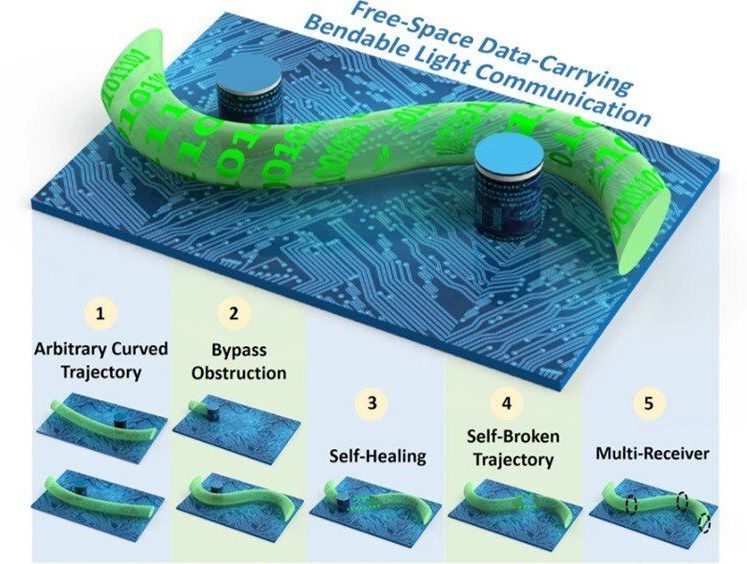Bendable light beams have significant applications in optical manipulation, optical imaging, routing, micromachining and nonlinear optics. Researchers have long explored curved light beams in place of traditional Gaussian beams for line-of-sight light communications. In a recent study now published on Scientific Reports, Long Zhu and a team of researchers in Optical and Electronic information, in China, proposed and developed free-space, data-carrying bendable light communication systems between arbitrary targets for potential multifunctionality. The researchers employed a 32-ary quadrature amplitude modulation (32-QAM) based discrete multitone (DMT) signal to demonstrate free-space bendable light intensity modulated direct detection (IM-DD) communication in the presence of three curved light paths. They characterized (tested) multiple functions of free-space bendable light communication to reveal that they allowed optical communications to be more flexible, robust and multifunctional. The work will open a new direction to explore special light beams enabled, advanced free-space light communications.
Bendable light beams are a new class of electromagnetic waves associated with a localized intensity maximum that can propagate along a curved trajectory. Researchers have previously studied and reported generic classes of bendable light beams that travel along elliptical and parabolic trajectories. Airy beams (appear to curve as they travel) are a type of non-diffracting beams that maintain its wavefront during transmission, much like Bessel beams (which only exist in theory, ideally) for optical communication free of obstructions. Airy beams possess properties of self-acceleration, non-diffraction and self-healing to propagate along a parabolic trajectory. Aside from airy beams, bendable light beams can reconstruct their wavefront to propagate continuously along the preset trajectory. To explore advantages of bendable light beams for diverse applications, researchers must bend the light along arbitrary trajectories; which can be achieved using the caustic method.
